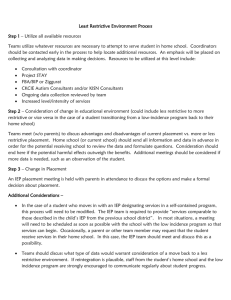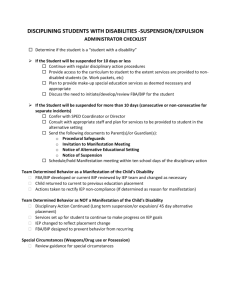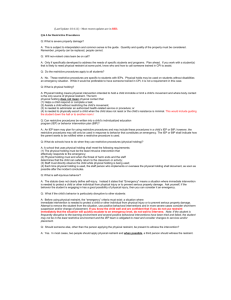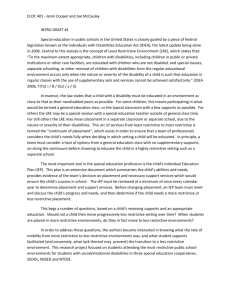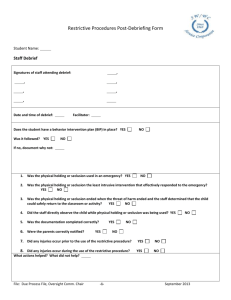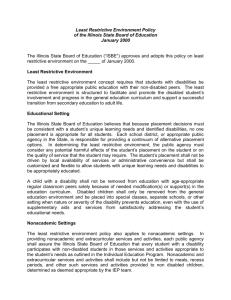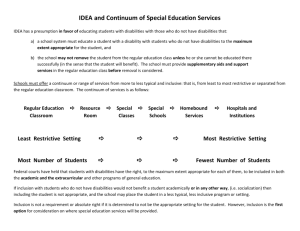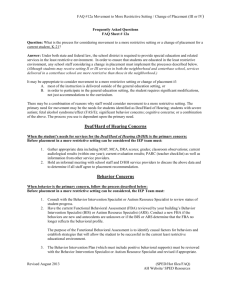Referral Process
advertisement
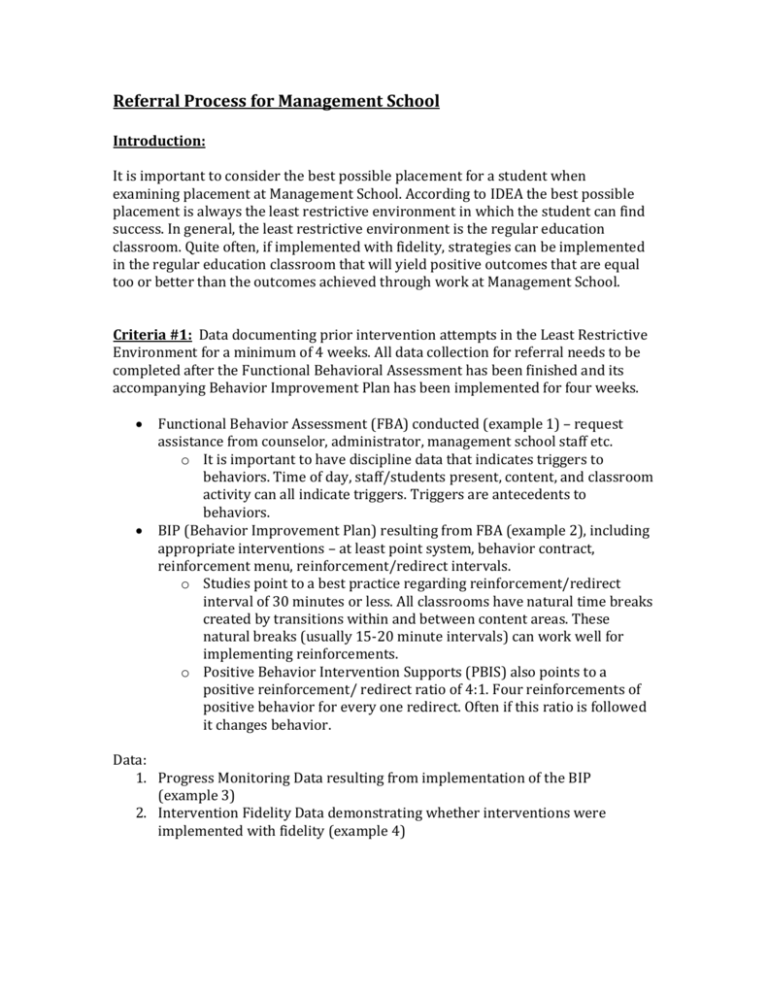
Referral Process for Management School Introduction: It is important to consider the best possible placement for a student when examining placement at Management School. According to IDEA the best possible placement is always the least restrictive environment in which the student can find success. In general, the least restrictive environment is the regular education classroom. Quite often, if implemented with fidelity, strategies can be implemented in the regular education classroom that will yield positive outcomes that are equal too or better than the outcomes achieved through work at Management School. Criteria #1: Data documenting prior intervention attempts in the Least Restrictive Environment for a minimum of 4 weeks. All data collection for referral needs to be completed after the Functional Behavioral Assessment has been finished and its accompanying Behavior Improvement Plan has been implemented for four weeks. Functional Behavior Assessment (FBA) conducted (example 1) – request assistance from counselor, administrator, management school staff etc. o It is important to have discipline data that indicates triggers to behaviors. Time of day, staff/students present, content, and classroom activity can all indicate triggers. Triggers are antecedents to behaviors. BIP (Behavior Improvement Plan) resulting from FBA (example 2), including appropriate interventions – at least point system, behavior contract, reinforcement menu, reinforcement/redirect intervals. o Studies point to a best practice regarding reinforcement/redirect interval of 30 minutes or less. All classrooms have natural time breaks created by transitions within and between content areas. These natural breaks (usually 15-20 minute intervals) can work well for implementing reinforcements. o Positive Behavior Intervention Supports (PBIS) also points to a positive reinforcement/ redirect ratio of 4:1. Four reinforcements of positive behavior for every one redirect. Often if this ratio is followed it changes behavior. Data: 1. Progress Monitoring Data resulting from implementation of the BIP (example 3) 2. Intervention Fidelity Data demonstrating whether interventions were implemented with fidelity (example 4) Both pieces of data are needed to make accurate and defensible decisions that are in the best interest of the student. Failure to implement evidence-based interventions prior to placement in a more restrictive setting will require the student to remain in the regular classroom. Criteria #2: Team consensus – Team consists of at least two representatives from both the home school and the Colgan Center, preferably the building administrators and the applicable classroom teachers. Intake for Students with an IEP For students with IEPs, the IEP team, including a Management School representative, must meet in order to initiate the referral process. It needs to be considered that the student IEP may need to be amended to reflect services/minutes available at the Colgan Center. Referrals (to Management School) for students in the midst of an initial evaluation process will not be approved by Management School personnel. It is our belief that a student undergoing evaluation for special services should be tested in their home school environment. Moving a student during testing could adversely affect the outcome for determining services. Student re-evaluations occurring within 3 months of placement at Management School will be completed by the sending school. Based on the model developed by Clayton R. Cook, Ph.D., and Diana Browning Wright, MS, LEP Cook, C. & Browning Wright, D. (2009) RTI in restrictive settings: the tiers model for students with emotional/behavioral disorders. LRP Publications
